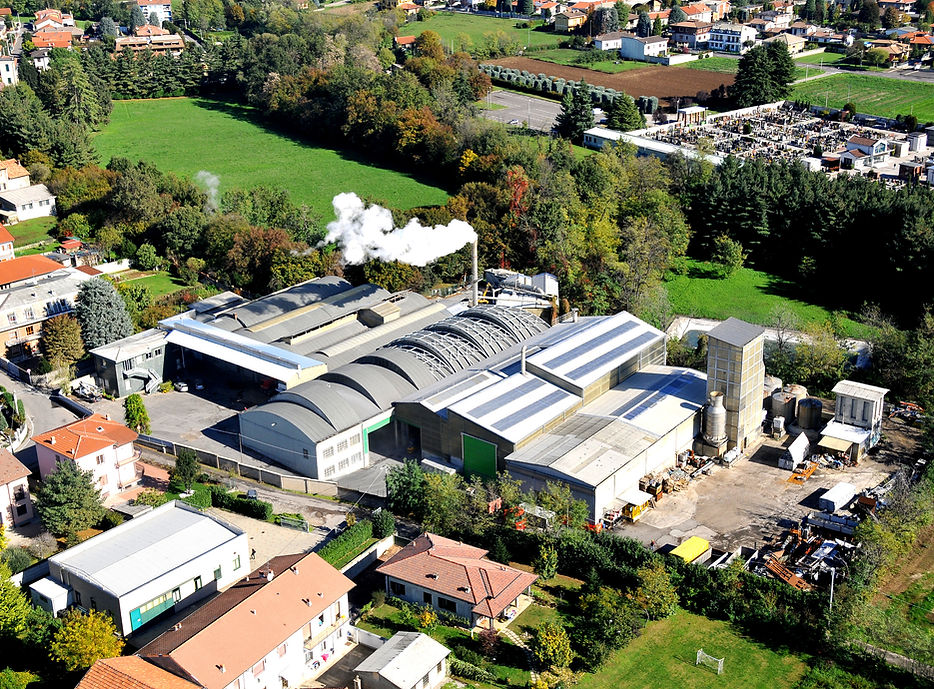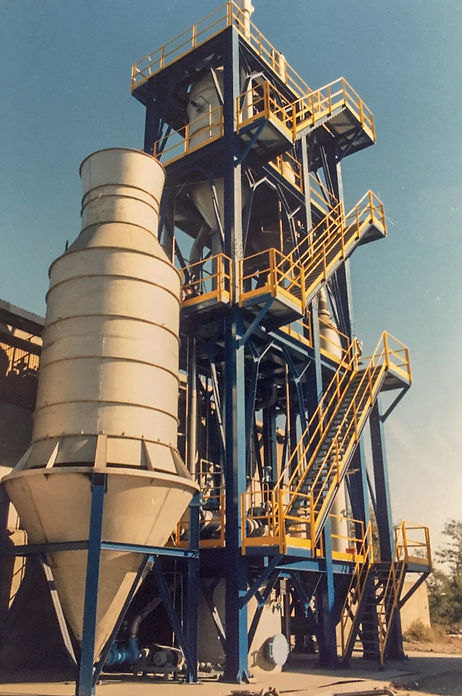
HISTORY
Our Company, situated 15 km north of Milan, was founded by Luigi Premoli in 1926 to treat metal scraps and refine them into titled alloys. Nearly a century later, the Company is one of the most long-lived companies in the Italian metallurgical sector.
In its early days, the first plant focused on the recovery of the most commonly used nonferrous metals, namely copper and zinc alloys. However, with the advent of the Second World War, aluminum acquired a prominent role as a valid alternative to steel. The demand for aluminum grew rapidly as it started to be commonly used in construction. Anticipating the great potential of this metal, the Founder, with the support of his three children, decided to shift the focus of the company’s activity.
In 1946 a new plant was built and it was entirely dedicated to the treatment and casting of aluminum.

In the Sixties, a revolutionary plant for the atomization of molten aluminum was built. Well ahead of competition, the Company adopted a new technology that used high-pressure compressed air to atomize aluminum. This allowed the production of fine metal powders and granules, which were used in the chemical, extractive (explosive) and steel industry.
In the Seventies, a second plant was built in a vast industrial area (150.000 sq. m). The construction of over 25,000 sq. m of industrial warehouses made it possible to isolate both the machinery and the stocks of raw materials, as well as minimize the impact of the industrial activity.

In order to treat the various types of materials while ensuring compliance with environmental standards, several precautionary measures were put in place. The company designed and adopted dedicated shearing and grinding systems to reduce the size of the raw materials. This is an essential prerequisite for the subsequent selection/concentration phase of the material before the melting phase.
In the Eighties, the experience acquired in the treatment of aluminum (skimming, slag, etc.) and the numerous experiments in the hydrometallurgical field, led to the development of a unique process for the complete recovery of all the individual components of the residues.
_edited.jpg)
This innovative process became the benchmark for all players operating in the field and, today, it is still considered as the Best Available Technique (BAT) in the European guidelines for aluminum refinement.
The process consists in washing the full residues to cause the dissolution of the salts they contain. The resulting brine is then recirculated until saturation, while the insoluble parts (mainly aluminum oxides) are separated and dried before being recovered.
A special water evaporation system causes the crystallization of the salts contained in the brine and the re-condensation of the evaporated water, which is recycled in a closed cycle. Thanks to this process, the long-standing issue related to residues coming from melting aluminum was resolved. The new process is a true turning point and a viable solution from an industrial and environmental perspective.
This great achievement allowed the Company to obtain the authorization for the recovery of (up to 100 t/day) of all types of aluminum waste and residues (scraps, turnings, skimmings, slags, powders, etc.) including those classified as dangerous wastes.
The authorization assigned in 1987, a decade earlier than the competitors, significantly increased the Company’s competitive advantage.
As far as the dangerous wastes are concerned, they are carefully selected and handled throughout our treatment process in order to comply with the specific requests of the downstream users, who can reuse them as secondary materials for industrial uses: a real example of circular economy in which 100% of the components are reused.
This process is also fully compliant with the technical-professional requirements dictated by the European standards.
In 2006, our Company was awarded the Integrated Environmental Authorization (IEA), authorizing it to manage and treat metal scraps and wastes.
In the last 40 years, we have also exploited our knowledge and expertise to expand and modernize the production capacity of metal alloys. The creation of two new casting and alloying lines supported by automatic stacking and packaging machineries, resulted in a significant increase of the production capacity up to 20,000 t/year.
Given the high production and the more stringent environmental regulations, the Company adopted an innovative fume filtration system that was recently upgraded.
Most of the production is focused on die-casting alloys, however, it also extends to products destinated to gravity casting.
Close collaboration with the key operators in the filed of primary aluminum (extrudes, laminators, etc.) allowed us to develop a dedicated service for the transformation of wastes that have decayed for their production and are no longer directly usable.
We exploit the know-how and our plants to regenerate them and return them to their original function in the form of ingots or titled sows. This is particularly appreciated by companies wishing to maintain control of their metal or who seek to escape the volatility of the market, ensuring a share of the material with guaranteed characteristics.
In addition to the production of alloys for foundries a.m., the Company also supplies steel plants (ingots, hemispheres and grains with Al content up to 98% for the deoxidation of steel) and other producers of articles (powders, mixtures, sleeves, formats, etc.) in the steel industry.
Aside from the core business, our 50-year-long active participation in several Associations of the non-ferrous metals sector, allows us to be constantly updated on the development of the technology and on the evolution of the environmental standards.